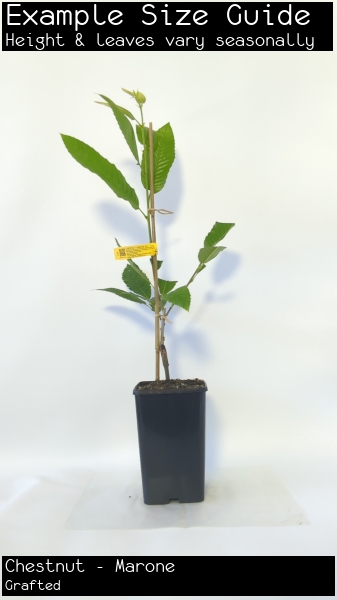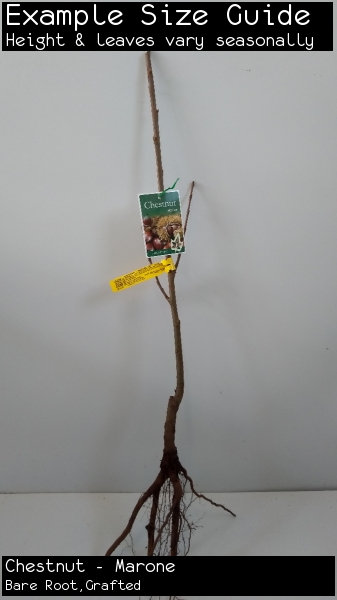Chestnut - Marone
Castanea sativa$59.00 ($59.00-$74.00 choose a size)
When will it be in Stock?
We previously had the most to buy in Feb and May. With limited quantities for sale in other months. They are unlikely to be available in Jul and Sep. Remember to click above to get notified when it is available once more.
Specifications of Chestnut - Marone
Preferred Climate Warm Temperate, Cool TemperateLearn About Climate Zones
Grown From GraftedLearn About Propagation Methods
Max Height (when in the ground with good conditions) +10m
Plants required to Pollinate 2 compatible plants (Pollination Required)Learn about Pollination
Can it Handle Frosts? Yes (Often below -2)
Amount of leaves in Winter? No Leaves (Deciduous)
Water Requirements Moderate Watering
Is it a Dwarf Fruit Tree? No (Full Size)
Time to Fruit/Flower/Harvest 2-3 Years
Sun or Shade Full (Sun:80%-100%)
Preferred Soil Type Perfect Drainage (Sand/Volcanic)
Soil pH Moderately Acidic (5.5-6.5)
Fruiting/Harvest Months April, May, June
Fertiliser All Purpose, Compost, Seaweed, Sulphur
Plant Width 6m+
Growth Rate Fast
Create a Filter to find similar plants
Pollinators for the Chestnut - Marone
This Chestnut will set nuts if you plant more than one.Choose another type from this list
Chestnut - April Gold
$59.00 ($59.00-$74.00 choose a size)
Chestnut - Reilly
$49.00 ($49.00-$79.00 choose a size)
Chestnut - seedling
$39.00 ($19.75-$49.00 choose a size)
Chestnut - Winchester
$49.00
Chestnut - Flemings Special
$89.00 ($89.00-$99.00 choose a size)
Chestnut Wandiligong Wonder
$74.00 ($69.00-$74.00 choose a size)
Chestnut - Flemings Prolific
$89.00 ($89.00-$99.00 choose a size)
Customers also bought
These plants are often purchased together. Also check plant information for suitability in your orchard.


































